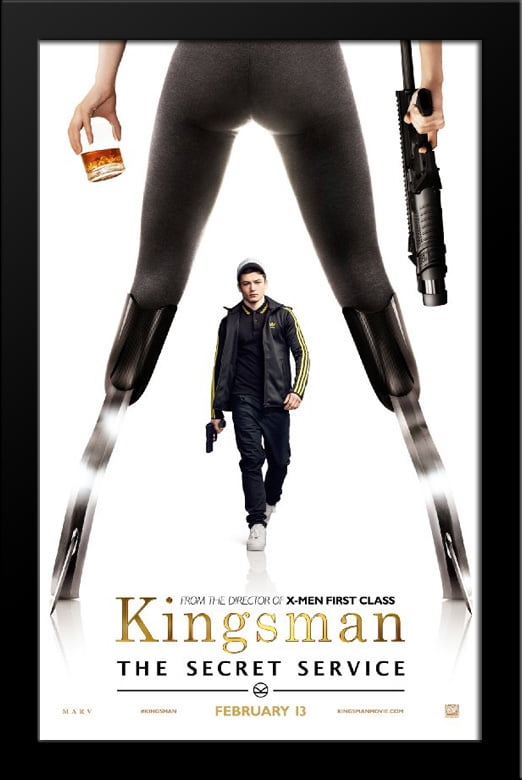I have chosen Fernando Meirelles and Kátia Lund’s 2002 crime/drama film City of God for my textual analysis. The film is set between the beginning of the 1960’s and the beginning of the 1980’s and features the stories of two young boys, Rocket and Lil’ Dice both growing up in the slums of the city of god where one pursues photography and the other becomes a ruthless gang leader. I have chosen the section of the film between 0:00:50 – 0:05:50 which is during the opening sequence of the film. In this scene, an opening montage plays showing a bustling open market area where a chicken escapes and the gang chases after it only to bump into Rocket where the police then show up, trapping Rocket between the gang and the police. To analyse this section, I am focusing on sound, editing, mise-en-scene and critical reception.
All posts by Sam Latham
Filters
Textual analysis assesment
Film – City of God (Meirelles & Lund, 2002)
Chosen Scene – opening (0.00.50 – 0.05.50)
Film Element Focus – Sound, Editing, Mise en Scene
Link to Film – City of God
Textual analysis first response
| Film | Preference /10 | Memorable scene | Film element focus |
| Pans Labyrinth | 6 | Pale man | Mise ne Scene, Cinematography |
| Rome Open City | 4 | Torture scene | Cinematography |
| City of God | 9 | Opening chicken chase | Editing, Sound |
SMART Target Table
| Unit | Pre Production | Production | Post Production | Pages |
| Comp Study | Ideas Finalized Research Done Script Complete VO Recorded | VO Arranged in Premiere Both Films Recorded 15th June Clips From Films Arranged in Premiere 10th July | Editing complete 15th July | Source List |
Comparative study introduction
George A. Romero’s 1968 American film Night of the Living Dead and Edgar Wright’s 2004 British film Shaun of the Dead are both distinctive zombie-horror films. They are incredibly recognizable, from the classical zombies in Night of the Living Dead, to the comic characters that appear in Shaun of the Dead. These films have been chosen as they were made in contrasting eras of the zombie-horror genre, so the development of the genre can be clearly seen. It can easily be argued that Shaun of the Dead is inspired by Night of the Living Dead, as many similar aspects and tropes of the genre can be seen in the two. Romero’s film follows Ben as he hides from the invading zombies, after holding out against the zombies they are eventually killed by the Americans who also accidentally kill Ben. Shaun of the Dead also features a zombie invasion, but a different narrative, as a group of friends, who attempt to hold out against the zombies in a less than ideal location and are eventually saved by the military after the death of most of them.
comparative study research question draft
To what extent do the films Shaun of the Dead (2004) and Night of the Living Dead (1968) demonstrate how independent zombie horror films have developed over time?
Comparative study
Shaun of the Dead and Night of the Living Dead – narrative theory, genre theory, post modernist theory, post colonial theory and no wave
Male Gaze Posters


Script to Screen – 28 days later – Alex Garland
When Jim wakes up from his coma in the hospital we get near exactly what the script entails of Jim awaking in the hospital bed out of a coma.

The one difference in this section is that he is not clothed in the film, I believe this is done more for shock value over anything else as it is a startling visual to grab the viewers attention.
He then exits the room and wanders toward the lobby where he attempts to use a public payphone which does not work and drinks a Pepsi.

The script here is exactly what we get apart from one canted long shot we get of Jim walking down a set of stairs, this shot visually emphasises his isolation and the lack of life around him before we even leave the hospital which sets this precedent for a lack of people around so we have an idea of what to expect when he actually goes outside.
As Jim travels across London we get many more extreme long shots and medium long shots until he makes him way to the church.

Again the film sticks with the script apart from the fact that the soundtrack underscores this bit of the scene. Also another shot is added where Jim is scavenging and picking up as much money he can which tells the audience how he is oblivious to the situation he is in and still thinks that money will help him, and it better helps set up for when Mark and Selina have to explain what’s going on to him as we know how clueless he is.
